Tokyo 2020 Olympic Torch Relay Concept Movie
Tags: Tokyo Olympics, Paralympics, Health Risks, Spirits, Japanese Culture, Venue, Set backs, Environment, COVID Impact, NWO Agenda
Well, the Olympics are getting really close now. I apologize for not getting this out to you sooner. Here is my breakdown of the symbology and underlying purpose and message in these events. There is a lot to cover so this is another very lengthy post. Take your time, review it all as you are able.
For most Americans some of these concepts are totally foreign. Though, with the rapid increase in Paganism and the bombardment of Eastern thought and Eastern mysticism, you are likely at least a little familiar with the terminology.
Everything about the Tokyo Olympics is focused on bringing you into the NEW ODER way of thinking. I pray that you find the information here eye-opening. These are very strange and very exhilarating times we are living.
Always remember, you have nothing to fear if you belong to the CREATOR GOD. If you are not under the blood of JESUS, I don’t know how you imagine you will stand.
Keep your mind open to the leading of the Holy Spirit as you review this information. Pray always for those you love and those GOD loves. EVERYONE NEEDS PRAYER. NONE of us can stand alone.
By the way, if you watched the clip at the top of the post, did you catch the GIANT passing through??
 Check it out start at minute marker 0:28 …. What is that all about?
Check it out start at minute marker 0:28 …. What is that all about?
This next video has caused a lot of stir. The controllers will tell you that it is just from a movie. That is true the film was used in a movie. They often put things in movies and television so that they can make you think that it is not true. There is no proof that this film is altered in anyway or staged. Watch this short video about the film. It has a lot more to tell you.
 Nephilim Giants in JAPAN?
Nephilim Giants in JAPAN?
Support Independent Content: https://www.patreon.com/doucheworldorder $5 gets you an awesome World War V sticker!
The Japanese have a long history of “ancestral worship” of giants. This video shows evidence of the existence of giants among the population of Japan that seem to really like walking around in their underwear and hanging out in tea houses – which is pretty cool if ya ask me. This video proves the nephilim can co-exist with us without eating us. I hope the shills watching this realize that I am not against you guys. I am trying to prevent the freaking wrath of God here. We all live here together. If we don’t get along… BOOM. Let’s not go that route guys.
 巨人 Kyojin
巨人 Kyojin
| ジャイアント | 巨人 | 大男 | 巨漢 |
| Jaianto giant |
Kyojin colossus | Ōotoko Great Man | Kyokan giant |
Source: https://www.wordhippo.com/what-is/the/japanese-word-for-0d956e868cfeb49674813ac76522b5179861fb02.html
spacer
Scheduled Dates for the Tokyo Olympic Events:
23 July to 8 August 2021. Tokyo Olympics and 24 August – 5 September 2021 Paralympic Gamesspacer

- Wednesday, 13 January 2021

Four-time Olympic champion Sir Matthew Pinsent has suggested moving the Tokyo Olympics to 2024 after claiming it would be “ludicrous” to stage the Games in 2021 against the backdrop of a global health crisis.
“Tokyo given the option of delaying until 2024, Paris move to 2028 and LA 2032.
“The athletes lose an Olympics but that’s looking likelier by the day.”
A recent Kyodo News survey found around 80 per cent of Japanese people want this year’s Olympic and Paralympic Games in Tokyo to be cancelled or postponed.
“The idea of Olympic athletes, officials, delegations getting vaccine priority is antithetical.
“The risks of 000’s of people flying round the world to gather unvaccinated is ludicrous.”
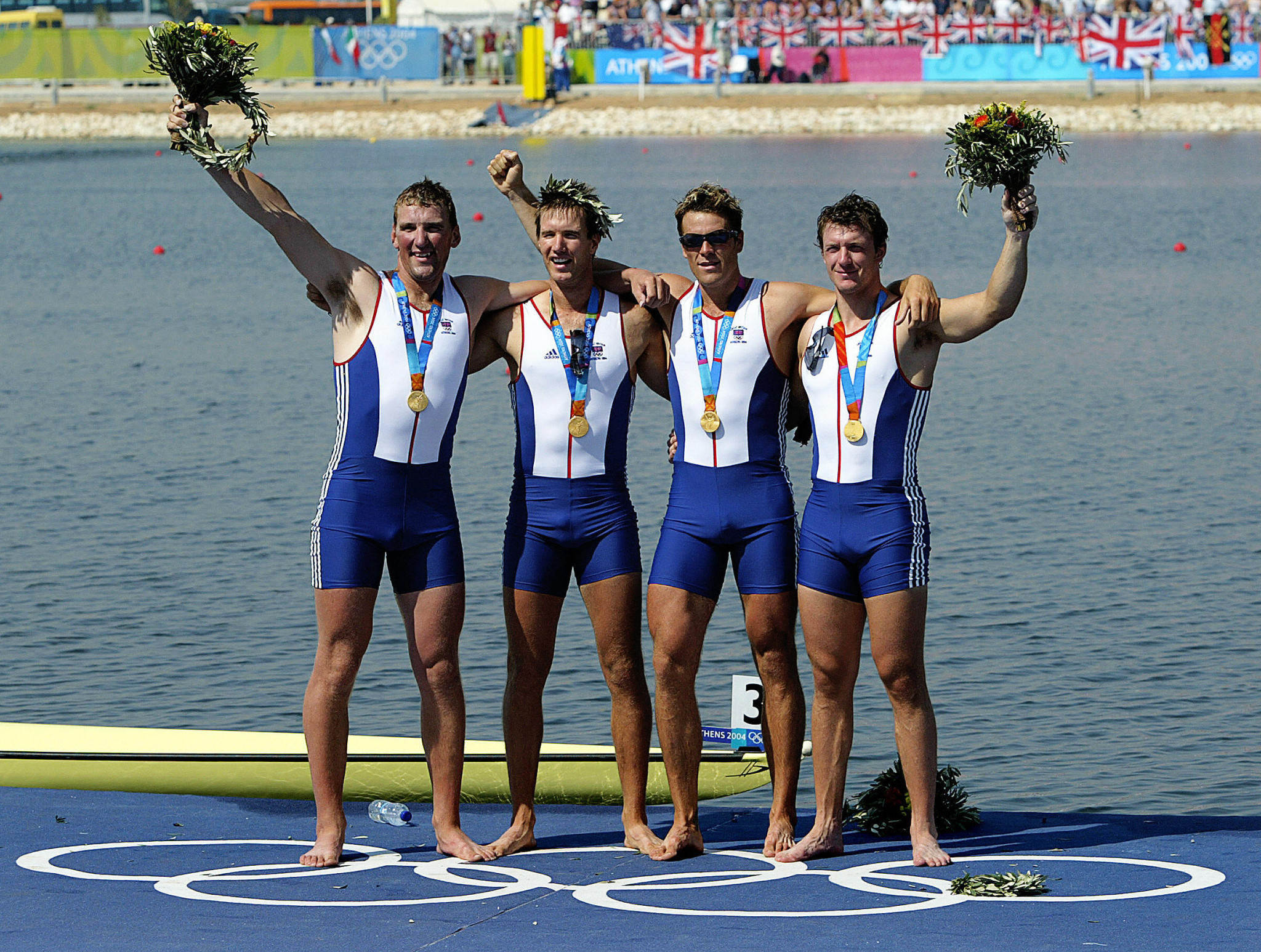
“It’s a global event for a very good reason.
“It’s celebrating sport across every single nation, every single continent.
“Someone needs to decide (what a global event is).
“If the developing nations aren’t able to access the vaccine then that seems incredibly unfair.
spacer
![]()
Cancel the Tokyo Olympics? It’s unlikely. Here’s why
Excerpts only, view the entire article by clicking the link above. Video on webpage
The prospect of canceling the Olympics, he noted, poses an existential threat to the IOC, since its primary job is to stage the Games every two years.
“That’s what makes the IOC significant,” he told CBS News. “That’s what makes the individuals on the executive council of the IOC significant. That’s what makes (IOC chief) Thomas Bach significant. And so there is a momentum that tells them that this is what they have to do.”
Japan has sunk as much as $35 billion into staging the Games, Zimbalist reckons, making them the most expensive ever — and hard to walk away from.
Or as he put it, it would “be very embarrassing to have spent $30, $35 billion, and then have it all go poof!”
Japanese Prime Minister Suga, however, together with the IOC, has maintained steadfastly that the Games can and will be run without compromising public health. Exactly how they intend to do that will become clear this week with the publication of the final edition of the “playbook,” a detailed manual of safety measures governing athletes, media, possible spectators, and everyone else involved in the Games.
Even if Tokyo did want to back out of the Olympics, legally, it can’t, according to Yoshihisa Hayakawa, an international law specialist and partner with the firm Uryu & Itoga.
With even Olympic critics saying it’s already too late to halt the event, Japan is hoping for the best, and bracing for the worst.
spacer
Besides mountains, LEY LINES are very powerful spiritually. So I looked up the leylines for Japan and low and behold, Mt Fuji was the power center.
Earth Chakra Points and Vortices
Chakra & Vortex Points of the Earth (World Sacred Sites)

Solar Plexus~ Mt. Fuji, Japan
The greatest power requires the lightest touch. This is the place that represents a very different reflection of power than we haven’t been used to on Earth. The energy it exudes is the true empowerment of your infinite nature. The Eastern Zen energy of simplicity and meditative insight radiates at Mt. Fuji.
spacer
Google Maps


List of hospitals in Japan – Wikipedia
Restraint more prevalent at psychiatric centers in Japan
OECD Countries By Hospital Beds – WorldAtlas
PDF Japan trails other countries in deinstitutionalisation …
Why East Asians Were Wearing Masks Long Before COVID-19
Americans might as well get comfortable in masks, since we’ll probably have to wear them in public for the foreseeable future.
It could pay to look on the plus side about masks and take a page from East Asians, Horii said.
“These times could encourage people in the West to reflect upon their own norms and values,” he said. “Rather than asking why people in East Asia are wearing masks, we should ask the people in the West why they did not wear them until recently and why some of them resist it. Japanese people have been doing it for a century!
spacer
Japanese Man Self-Isolated More Than a Decade Even Before Covid-19, Here’s Why
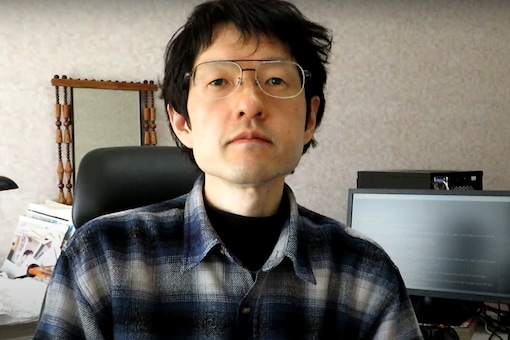
Credits: YouTube/ Nito Souji
The Japanese Ministry of Health defines it as a condition in which affected people remain in extreme social isolation from society at their home for at least six months.
While the culture of staying in isolation has been normalized due to the global pandemic, it has been thriving in Japan for a long time. In Japan, a person who stays in home isolation and confinement is known as a ‘hikikomori’ which translates to being confined, or social recluses. According to studies, there are over 1 million hikikomori nationwide, reports the Japan Times. The Japanese Ministry of health defines it as a condition in which affected people remain in extreme social isolation from society at their home for at least six months.
Why have young people in Japan stopped having sex?
Japan’s under-40s appear to be losing interest in conventional relationships. Millions aren’t even dating, and increasing numbers can’t be bothered with sex. For their government, “celibacy syndrome” is part of a looming national catastrophe. Japan already has one of the world’s lowest birth rates. Its population of 126 million, which has been shrinking for the past decade, is projected to plunge a further one-third by 2060. Aoyama believes the country is experiencing “a flight from human intimacy” – and it’s partly the government’s fault.
The number of single people has reached a record high. A survey in 2011 found that 61% of unmarried men and 49% of women aged 18-34 were not in any kind of romantic relationship, a rise of almost 10% from five years earlier. Another study found that a third of people under 30 had never dated at all. (There are no figures for same-sex relationships.) Although there has long been a pragmatic separation of love and sex in Japan – a country mostly free of religious morals – sex fares no better. A survey earlier this year by the Japan Family Planning Association (JFPA) found that 45% of women aged 16-24 “were not interested in or despised sexual contact”. More than a quarter of men felt the same way.
Some of Aoyama’s clients are among the small minority who have taken social withdrawal to a pathological extreme. They are recovering hikikomori (“shut-ins” or recluses) taking the first steps to rejoining the outside world, otaku (geeks), and long-term parasaito shingurus (parasite singles) who have reached their mid-30s without managing to move out of home. (Of the estimated 13 million unmarried people in Japan who currently live with their parents, around three million are over the age of 35.) “A few people can’t relate to the opposite sex physically or in any other way. They flinch if I touch them,” she says. “Most are men, but I’m starting to see more women.”
According to government figures released in 2010, there are 700,000 individuals living as hikikomori with an average age of 31
Animism, Frankenstein and the Biblical injunction against creating life led to the dawn of robotic warfare
 The affection of a certain island nation for all things robotic – from hundred foot tall warfighting mecha to infantile therapy robots – is well known. It contrasts sharply with the equally entrenched Western fear of automatons, beginning with the very invention of the term “robot,” which was coined in a Czech play that debuted in 1921 in which, naturally, the robots eventually rise up and kill their human masters.
The affection of a certain island nation for all things robotic – from hundred foot tall warfighting mecha to infantile therapy robots – is well known. It contrasts sharply with the equally entrenched Western fear of automatons, beginning with the very invention of the term “robot,” which was coined in a Czech play that debuted in 1921 in which, naturally, the robots eventually rise up and kill their human masters.
How could two cultures come to such fundamentally divergent conclusions about the status and future of the semi-autonomous helpmates whose increasing presence in our lives seems pre-ordained by nearly every sci-fi vision of the future?
Heather Knight, founder of the world’s first (non-industrial) robot census, has made the study of robot / human interaction her life’s work. She posits that the difference between Japanese and American attitudes toward robots is rooted in something much older than even the idea of robots: religion. “In Japan… they’re culturally open to robots, on account of animism. They don’t make a distinction between inanimate objects and humans.”
|
Animism – Wikipedia Animism (from Latin: anima, ‘breath, spirit, life’) is the belief that objects, places, and creatures all possess a distinct spiritual essence. Potentially, animism perceives all things—animals, plants, rocks, rivers, weather systems, human handiwork, and perhaps even words—as animated and alive. |
Animism is a component of the Shinto faith, the religion that preceded the introduction of Buddhism to Japan and remains an influential part of the country’s culture. Animism is the notion that all objects have a spirit – even man-made objects. Here’s social scientist Naho Kitano in Animism, Rinri, Modernizationp; the Base of Japanese Robotics (pdf)
The sun, the moon, mountains and trees each have their own spirits, or gods. Each god is given a name, has characteristics, and is believed to have control over natural and human phenomena. This thought has continued to be believed and influences the Japanese relationship with nature and spiritual existence. This belief later expanded to include artificial objects, so that spirits are thought to exist in all the articles and utensils of daily use, and it is believed that these sprits of daily-use tools are in harmony with human beings.
In the West, in contrast, creating life inevitably leads to destruction of the creator – a notion that is hardly original to Mary Shelley’s Frankenstein, as author Rui Umezawa points out.
In order to understand fully religion’s influence on the West’s attitude toward robotics, we also must remember that Judeo-Christian monotheism also adheres to the doctrine that only God can give life, a popular interpretation of Genesis in which there is only God in the beginning and all living things are His creations. Exodus also decrees that idolatry is a sin. Thus, any human who breathes life into an inanimate object is assuming the role of God and thereby becoming a false idol. Such a blasphemer deserves punishment, and in the conventions of science fiction, this usually comes in the form of betrayal by the robots. From the 1920 work R.U.R. (Rossum’s Universal Robots) by Czech playwright Karel Čapek – who is credited with coining the term “robot” – through The Terminator movies to Battlestar Galactica, such human vanity is constantly met by rebellion by its creation.
In a feedback loop initiated by these preconceptions, culture influences not only the perception of robots, but also the design of robots created by Japanese and American engineers. Sally Augustin, a journalist writing for Miller-McCune, argues that Americans value emotionally expressive robots, while Japanese are content with inferred emotion conveyed byrobots whose faces are obscured in the same manner as actors in Japanese Noh plays. More concretely, Americans have directed much of their research toward robots with military applications, while the Japanese “are investing billions of dollars on consumer robots aimed at altering everyday life.”
Given that Japanese culture predisposes its members to look at robots as helpmates and equals imbued with something akin to the Western conception of a soul, while Americans view robots as dangerous and willful constructs who will eventually bring about the death of their makers, it should hardly surprise us that one nation favors their use in war while the other imagines them as benevolent companions suitable for assisting a rapidly aging and increasingly dependent population.
Or..maybe NOT! For all their talke of peace, harmony and balance, it does not appear that Japanese people are happy or mental/spiritually stable. They don’t really seem all that trilled with the idea of being handled by ROBOTS either:
No, robot: Japan’s elderly fail to welcome their robot overlords
By Michael Fitzpatrick
BBC News, Tokyo
Published
In Japan robots are friendly helpers not Terminators.
So when they join the workforce, as they do often in factories, they are sometimes welcomed on their first day with Shinto religious ceremonies.
But whether the sick and elderly will be as welcoming to robot-like tech in their homes is a question that now vexes a Japanese care industry that is struggling with a massive manpower shortage.
The Japanese government and care industry now seems to agree after robots have turned out to be too expensive, impracticable and sometimes unwelcome, even in “robot friendly” Japan.
The country’s biggest robot maker Tmsuk created a life-like one-metre tall robot six years ago, but has struggled to find interested clients.
Costing a cool $100,000 (£62,000) a piece, a rental programme was scrapped recently because of “failing to meet demands of consumers” and putting off patients at hospitals.
“We want humans caring for us, not machines,” was one response.
Hikikomori, A Japanese Culture-Bound Syndrome of Social …
Why does Japan have such a high suicide rate? – BBC News
Japanese Culture – Core Concepts — Cultural Atlas
For example, while Japanese culture classically emphasises a patient, gentle and harmonious way of life, today it is normal for people to be packed into Tokyo trains like sardines and work long hours with little rest. Nevertheless, many traditional values of Japan still underpin the culture.
The top 10 words to describe Japanese people … – Japan Today
A hard-worker or “hataraki-mono” is definitely a common word that classifies a Japanese mindset. In a culture where your job is supposed to take precedence over even your family at times, it’s unsurprising that foreign nationals would latch on to this particular description.
Harmony In Japanese Culture – Japan Talk
Harmony In Japanese Culture. posted by John Spacey, May 06, 2015. It’s often said Japan is a conflict-avoiding culture. In Japanese this is explained by the concept of “wa”, literally “harmony.” Japanese laws, rules, customs and manners tend to go out of their way to avoid conflict. This has both positive and negative results.
While Americans generally have to be self-motivated, Japanese employees embrace a group mentality and look to their superiors for approval before making big decisions.
Many Japanese companies adhere to a mantra called ho-ren-so, according to a paper from Doshisha University in Kyoto, Japan. Ho-ren-so is a mnemonic device that combines the first syllables of three verbs: Houkoku (report), renraku (contact), soudan (consult).
This means that an employee in Japan must always keep their superiors informed about what they are doing. Every decision, no matter how small it may seem, should go through the chain of command and get the stamp of approval from the boss. Employees should immediately report any problems to their bosses before trying to take care of anything on their own.
East Asian countries, are more focused on the group. “[They] tend to have a Confucian hierarchy, where the group is sacred and leaders are seen as benevolent...
Japan is notorious for its long work hours. There is even a phenomenon in the country where people have died from working too much. It is called karoshi, which literally means “death by overwork.”
spacer
Though the games look like they are going to occur, the Japanese nation will nto benefit much from them. No spectators will be allowed. Not at the events or even in the surrounding area.
Tokyo Olympics to be Held Without Spectators
![]()
Tokyo Olympic official tears up as he apologizes for canceling spectator’s tickets amid COVID-19 surge in Japan
An organizer of the Tokyo Olympics teared up Friday as he apologized for spectators being barred from the games amid a rise in COVID-19 cases in the Japanese capital.
“We have received great cooperation from many people before and for people who have been looking forward to the Tokyo 2020 Games,” Hidenori Suzuki, the head of ticket sales for the games, said during a press briefing on the ticket cancellations, according to a Reuters video.
“I feel really sorry that we couldn’t meet their expectations,” Suzuki, who was wearing a white surgical mask, said as he got choked up.
A Japanese official choked up with tears as he apologized for the cancelation of Olympic tickets https://t.co/Sr6EpfqtkW pic.twitter.com/vq9mtxBaDh
— Reuters (@Reuters) July 9, 2021
Suzuki added, “For people who have been waiting to see the games for two years due to the postponement of the Olympics…I feel really sorry that we can no longer provide them this opportunity.”
“We’ve done all we could to meet the expectations of those who had bought the tickets and I feel a deep sense of pain,” he said.
Organizers of the Olympics said on Thursday that they were banning spectators from the games within Tokyo after the city declared a COVID-19 state of emergency.
The Olympics open on July 23.
spacer
Symbols and Signs are very significant. So let’s take a look at the logos and mascots for the Tokyo Olympics and Paralympics.
THE Olympic Games are finally set to get underway after a one-year delay due to the coronavirus pandemic.
And as with all Games, Tokyo will have its own unique logo.
What is the Tokyo 2020 logo and what does it represent?
Organisers claim it combines traditional Japanese colours with the Olympics’ ‘Unity in Diversity‘ motto.
A statement from Tokyo 2020 read: “Chequered patterns have been popular in countries around the world throughout history.
“In Japan, the chequered pattern was known as “ichimatsu moyo” in the Edo period (1603-1867), and this chequered design in the traditional Japanese colour of indigo blue expresses a refined elegance and sophistication that exemplifies Japan.
“Composed of three varieties of rectangular shapes, the design represents different countries, cultures and ways of thinking.
“It incorporates the message of ‘Unity in Diversity’.
“It also expresses the fact that the Olympic and Paralympic Games seek to promote diversity as a platform to connect the world.”
Was the Tokyo 2020 logo changed?
Yes. The original logo was scrapped in 2015 following accusations of plagiarism.
Toshio Muto, director general of the Tokyo organising committee, told a news conference: “We’re certain the two logos are different.
“But we became aware of new things this weekend and there was a sense of crisis that we thought could not be ignored.
“We have reached a conclusion that it would be only appropriate for us to drop the logo and develop a new emblem.
“At this point, we have decided that the logo cannot gain public support.”
Belgian designer Olivier Debie claimed the logo was taken from his 2013 design for the Theatre de Liege emblem. (I believe this is also part of the script of the controllers. Belgium is the birthplace of the allegiance of the Royals, and the UN. The center so to speak of the NWO.)
|
Theatre de Liege translates to “The Liège Theater”
|
spacer
The Golden Ratio
Also known as Phi, the Golden Mean, or the Golden Section, the Golden Ratio was revered as the mathematical law or representation of beauty by the Greeks. It is the numerical representation of infinity and an unreachable approximation. This begs one to contemplate the possibility of a transcendent number. From the Golden Rectangle comes the Fibonacci Spiral which is seen in flowers, snail shells, pinecones, and other parts of nature. The Golden Rectangle and Fibonacci Spiral are used in the crafting of musical instruments like cellos, violins, and the tones of musical scales are created using these same mathematical formulas. These formulas have been used in design and architecture going back at least 4,000 years and are seen in historic buildings like the Greek Parthenon.
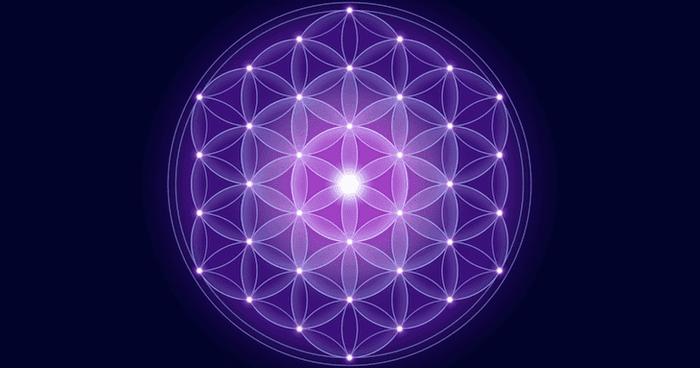
The Flower of Life
Another very powerful symbol that is found all over the world dating back over 6,000 years and up to 10,000 years is the Flower of Life. This symbol is made of evenly-spaced, overlapping circles with six fold symmetry like a hexagon and looks like a flower, hence the name. It can be found in Egypt at the Temple of Osiris; the Forbidden City of China, synagogues in Galilee, Israel; in temples across India; in la Mezquita, Spain; Turkey, Japan and elsewhere. Leonardo da Vinci spent much time playing with and contemplating the Flower of Life’s form and used its mathematical properties in his art. Just by gazing at the symbol, or trying to count the circles will play tricks on your mind, and there is no wonder that people from ancient times to now are enamored with the Flower of Life.
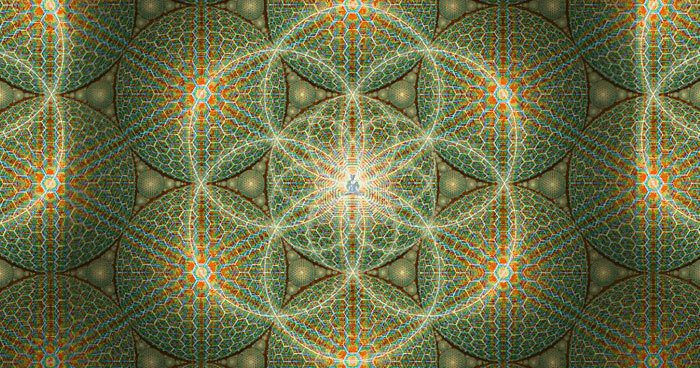
Within the Flower is the Seed
The Seed of Life is a symbol found within the Flower of Life, as well as many other symbols of great significance including Metatrons Cube. These shapes called polygons are defined by having sides of equal length. This includes the cube, tetrahedron, dodecahedron, icosahedron, octahedron and they represent what Plato called the 5 platonic solids. These are visible within the flower of life when straight lines are drawn to connect the center of various circles within it. It is amazing to see all of this symmetry unfold in one succinct pattern which is created by math. Since many traditions believe that circles and curves represent the feminine, while corners and straight lines represent the masculine, this symbol also shows a divine balance of both. (Repesenting the combining of the genders to form one “unisex”.)
Spirituality and Sacred Geometry
Higher frequencies of energy and awareness are transmitted through sacred geometry. Sacred geometry reveals that there are mathematical, or abstract patterns beneath everything that we see in the physical world. How might this relate to our own personal journey of integrating science and spirituality? Our internal beliefs create patterns that slowly ripple outward from us and manifest into real world experiences. The invisible informs the visible. Sacred geometry is a visualization and metaphor of the connectedness of all life, the interface between abstraction and physical reality. When we change the mathematical formulas, the relationships, we also change physical form. This is the teaching of many mystics.
DO NOT FALL FOR THIS BS!! THIS IS MYSTICISM AND A LIE FROM THE PIT OF HELL!
 |
 |
You can easily see the the Parlympic Logo is merely the Olympic logo turned at an angle. The colors of both are stated to be the traditional colors for Japan, however they are just an adaptation of the Masonic Checkerboard. This is a symbol of DUALITY. You can see that the Paralympic logo is just the Olympic logo turned to a different angle. Notice how it looks like DEVIL HORNS?

There are certain symbols every culture recognizes. One of the most important is the checkerboard.
You see it in the world of fashion and advertising. In auto-racing the black and white checkered flag is raised to signal start your engines, after which it’s lowered to start the game of racing. Secret societies have used the checkerboard for eons to affect their consciousness as well as mass consciousness.
Ancient symbols are used all the time in public rituals. However most people have no real knowledge that they are being used to open up portals of energy.
Yesterday, I was reminded of this fact. I was in Charlotte, North Carolina to listen to my dear friend and author, Colette Baron-Reid. In her book, Remembering The Future, she mentions one mystical experience she had during which the ground underneath her feet looked similar to a checkerboard.
I literally lunged forward as I was reading this and said out loud, “there’s a reason you saw that checkerboard!”
It’s a symbol that has layers upon layers of meaningful information. The black and white checkerboard pattern is found on the floors of many old structures, such as those in the ruins of Pompeii. And on ceilings and walls of churches and mosques decorated in black and white.
Have you ever noticed that the checkerboard is used inside the entrance foyers of state and federal buildings. Why is this?
Numerologically the checkerboard has 64 squares. Six plus four equals 10 which is made up of the numbers 1 and 0.
The Zero is a perfect geometric shape indicating perfection, eternity, wholeness and the center. It symbolizes heaven. Most ancient temples, cathedrals, mosques and other important government buildings symbolize heaven with a dome thus bringing heaven to earth. You will often see circular zero patterns on tile floors and walls of religious buildings.
The number 10 is about the endless energy and bounty of God. It is the number of power, determination and leadership. 10 reflects a progressive thinker who manifests.
These 64 squares form an eight-sided design on a two-dimensional game-board used in our three-dimensional world. This is an important metaphor for creating energy in any reality. The alternating pattern of black and white triggers your mind to remember higher cosmic and spiritual laws. Laws that are implemented when you work with energy.
Like two sides of every coin, these black and white squares symblize female and male polarities, negative and positive forces, night and day, zero and one, dark and light, and yin and yang.
Take the local culture on the island of Bali, for example. They have long used the checkerboard pattern as a tool for balancing the forces of dark and light. Around the world, ancient power sites have calendars and computers made from stone based on the same principle a stone and a space, a one and a zero, or white and black.
Modern day computers are, of course, based on the exact same system of primary numbers or symbols, namely one and zero.
Within the board there are more layers of codes.
For example, the outer edge of every checkerboard is comprised of 28 squares. This corresponds to both the lunar and menstrual cycles and also adds up to a 10. I will be writing a lot more about the meaning of these layers and the checkerboard in my upcoming book.
spacer
|
|
|
 |
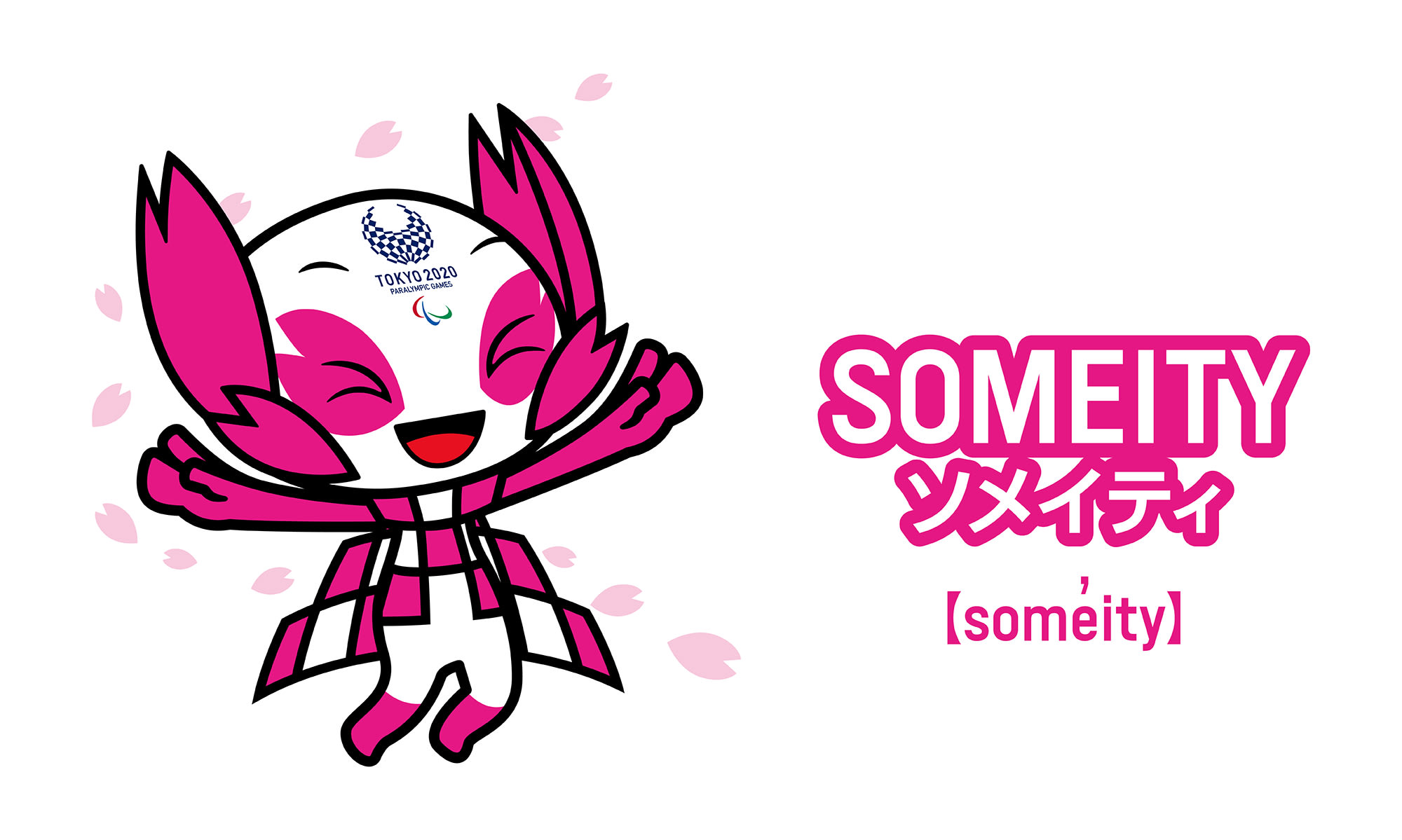 |
Tokyo 2020 Olympic Games mascotThe Tokyo 2020 Olympic Games mascot is styled with the Ai (indigo blue) Ichimatsu pattern from the Tokyo 2020 Games emblem, a tribute to both the respected tradition and modern innovation of Japanese culture. MIRAITOWA has a personality inspired by the Japanese proverb, “learn from the past and develop new ideas”. MIRAITOWA is cheerful and remarkably athletic, with a very strong sense of integrity. It has a special power to instantly teleport anywhere it wants. |
Tokyo 2020 Paralympic Games mascotThe Tokyo 2020 Paralympic Games mascot is quite a cool character, with mighty powers and cherry blossom tactile sensors. SOMEITY can use the sensors on the sides of its head for telepathic powers, fly using its Ichimatsu-pattern cape and even move objects without touching them. SOMEITY has a calm and quiet presence, guided by great inner strength, but can display superpowers that embody the toughness and determination of the Paralympic athletes. Someity loves being in nature, and can communicate with natural elements, such as stones and the wind |
| origin of the name: The name MIRAITOWA is based on the Japanese words “mirai”, meaning “future”, and “towa”, meaning “eternity”, representing the wish that the Tokyo 2020 Olympic Games will lead to a future of everlasting hope in the hearts of everyone around the world. | Origin of the name: The name SOMEITY comes from “Someiyoshino” — a popular type of cherry blossom — and the phrase “so mighty”. SOMEITY can show enormous mental and physical strength, representing Paralympic athletes who overcome obstacles and redefine the boundaries of possibility. |
spacer
 |
 |
 |
 |
 |
 |
 |
 |
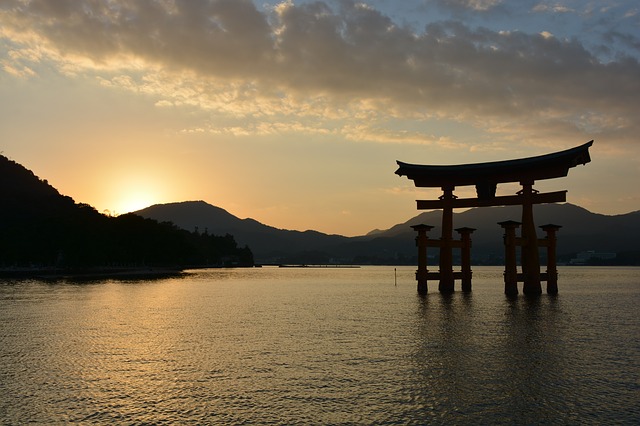
Itsukushima Shrine is one of the most famous shrines in Japan, designated as a World Heritage Site. The great torii that soars from the sea is famous, and you will probably have seen it once in a photo. It is a very mysterious scenery and popular as a tourist destination, but Miyajima with Itsukushima Shrine has been an object of faith since ancient times as a sacred place in ancient Japan.
Outline of Itsukushima Shrine (Miyajima)
Name: Itsukushima Shrine (Miyajima)
Frogana: Someday
Main Festival God: Munakata Three Goddess
Creation: XNUM X
Address: Miyajima-cho, Hatsukaichi-shi, Hiroshima Prefecture 1-1
Access: XNUM minutes by ferry from JR “Miyajimaguchi Station” XNUM minutes by ferry from Hiroshima Electric Railway “Koden Miyajimaguchi Station” Walk by 10 from high speed boat “Miyajima Pier Station”
Also known as: Kashiwajima Shrine, Akino Miyajima
Attributes: Shinto, Nature, Earth, Mountain, Ichinomiya, World Heritage Site, Japan’s Three Big Benten
Official HP:http://www.miyajima-wch.jp/
Benefits of Itsukushima Shrine (Miyajima) – Healing
How to visit the Itsukushima Shrine (Miyajima) – Shinto worship.
Itsukushima Shrine (Miyajima) power spot topics
Miyajima, where its Itsukushima Shrine is located, has been revered as a holy place since ancient times, but in the year of 593, Itsukushima Shrine was created by the local great family Saeki. Then, in 806, Kukai opened Mt. Hiyama and the Daisho-in Temple of the Shingon-shu was built, and Miyajima flourished as a great spot of faith. Itsukushima Shrine has been revered by successive generals and the courts since the Kiyoshimori almost completed its present form.
Traffic safety and fortune UP with powerful protective power

The current Goddess of Itsukushima Shinto shrine, Munakata 3 Goddess, is said to be a lord and has a great benefit in “traffic safety (sea traffic safety)”. In addition, it is said that Hei Sheng Sheng protects Itsukushima Shinto shrine, and it is said that there is a profit in the accumulated wealth by having built a huge wealth by Japan-Trade trade, and it is a power spot where a fortune UP can also be expected.
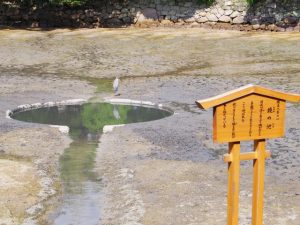 |
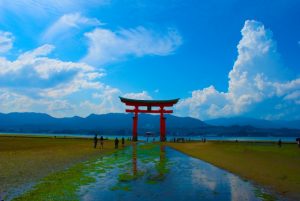 |
Mirror pond that appears only during low tideItsukushima Shrine has a mirror pond that appears only during low tide. There is fresh water from this pond, and the beauty of the moon reflected in this pond has been admired by Waka and haiku since ancient times. It is counted in Itsukushima Hakkei. |
You can walk to the large torii at low tideThe large torii, which is also a symbol of Itsukushima Shrine, can be walked at low tide. It is a powerful power spot of holy ground Miyajima. There are many coins in the torii, but there is a risk of corrosion and collapse, so do not imitate anything. |
It’s All SMOKE AND MIRRORS!!!
spacer
“THE LAND OF THE RISING SUN” IS A PHRASE SYNONYMOUS WITH JAPAN IN MOST COUNTRIES. BUT WHAT DOES IT MEAN? AND IS IT A TERM USED BY THE JAPANESE?
The expression “Land of the Rising Sun” is actually a translation of the name the Japanese use to refer to their country, Nihon. It’s written using the kanji characters 日 (ni) which means “day”, and 本 (hon), meaning “origin”.
spacer
Oyashima, the ‘Eight Islands’
Japan was a spoken language long before it was a written one, so it’s not clear what the earliest people of Japan called themselves. The Kojiki (‘Record of Ancient Matters’), written 711-712 CE, is the oldest Japanese text in existence and tells the mythical creation story of Japan. It was written in classical Japanese, a writing system made by pairing Chinese characters with Japanese sounds.
The Kojiki describes the birth of a land called ‘Oyashima’, or the ‘Eight Great Islands’, referring to modern-day Honshu, Shikoku, and Kyushu (Hokkaido and Okinawa were not considered part of Japan in ancient times). However, it’s unclear whether the name ‘Oyashima’ was ever used by Japan’s prehistoric people or if the name was simply applied later. That’s because, by the 8th century when the Kojiki was written, Japan was already going by the name of ‘Wakoku’ (倭国).
The People of ‘Wa’
‘Wa’ (倭) was the name given to the people whom the ancient Chinese encountered living in the southern area of Japan. The earliest reference to these people can be found in Chinese court documents hundreds of years before the Kojiki was written. These records mention that Han Dynasty Emperor Guangwu gave a golden seal to the first Japanese envoy to visit China in 57 CE. Now a national treasure of Japan, the seal is inscribed with text that roughly translates to ‘King of Na, Land of Wa, vassal to Han Dynasty’.

It’s uncertain why the ancient Chinese decided to call Japan ‘Wakoku’ (倭国), or the ‘Land of Wa’. One theory is that the traditional Japanese words for ‘I’ and ‘we’ are ‘waga’ (我が) and ‘ware’ (我), so the Chinese decided that must mean the people they encountered there were the Wa people.
The Yamato Kingdom
The Na Kingdom wasn’t the only one in ancient Japan. Before Japan was one country, it was several ancient provinces. The largest group of native Japanese were the Yamato, who lived in modern-day Honshu, and in the 6th century they established an imperial court in Nara modeled after the Chinese court. The Yamato adopted the character for ‘Wa’ (倭) and used it to write the name ‘Yamato’ (大倭).
Why Japan is called the ‘Land of the Rising Sun’
Around the 7th or 8th century, Japan’s name changed from ‘Wakoku’ (倭国) to ‘Nihon’ (日本). Some records say that the Japanese envoy to China requested to change the name because he disliked it; other records say that the Chinese Empress Wu Zetian ordered Japan to change its name. Either way, Wakoku became Nihon (sometimes pronounced ‘Nippon’).
The kanji for ‘Nihon’ (日本) literally means ‘origin of the sun’, referring to the fact that Japan is located east of China and appeared to be the place from which the sun rose. This tied in pretty conveniently with Japan’s origin story, as the sun goddess Amaterasu holds an important place in Japanese mythology.
The reason the Japanese became dissatisfied with the character for ‘Wa’ (倭) around this time was that the kanji had some negative connotations, including subservient, kneeling, and — interestingly enough — dwarf.
The Yamato people decided that they didn’t care for the symbol ‘Wa’ (倭) anymore and opted to change it to ‘Wa’ (和) meaning ‘peace’, and so ‘Yamato’ (大倭) became ‘Yamato’ (大和). The character for ‘peace’ is still used in modern times to refer to things that are inherently Japanese, including washoku (和食), traditional Japanese food; wagyu, domestic Japanese beef; and washitsu (和室), traditional rooms with tatami mats.
Jipangu and Japan
So how did the Yamato people get from ‘Nihon’ to ‘Japan’?
Japan was first mentioned as ‘Cipangu’ in the travel diaries of Marco Polo, though whether he actually visited Japan is still up for debate. It’s suspected that the name came from Portuguese, as early Portuguese explorers may have heard ‘日本’ pronounced ‘Cipan’ in northern China and interpreted it as ‘Jipangu’. Similarly, the Dutch may have heard the name ‘Yatbun’ or ‘Yatpun’ in southern China and interpreted it as ‘Ja-pan’, as the letter ‘j’ is pronounced with a ‘y’ sound in Dutch. These two alternative pronunciations for ‘日本’ can still be heard today in Shanghainese (‘Zeppen’) and Cantonese (‘Yahtbún’).
The Chinese used the name Wa for Japan. The name Nihon (日本) was used for the first time by Shotoku Taishi in a letter to the Emperor of China in the seventh century.
Since then, this name has been used by all other countries to discuss Japan. By extension, the Japanese people became the Nihon-jin (日本人). Our own word in English for Japan is itself a distortion: through the Chinese pronunciation Riben, Nihon became “Japan”.
Thus, we find many place names in Japan referring to Nihon: Nihonbashi (the bridge of Japan), Nihondaira (Japan Hill), Nihonkai (Sea of Japan) to list just a few.
In the nineteenth century it was usual to speak about Dai-Nihon Teikoku (大日本帝国), the Great Empire of Japan, a name now associated with the imperialist and aggressive era of Japan. The official name of Japan today reflects the defeat of 1945, talking about the Nihon-Koku (日本国), the State of Japan, without reference to the emperor.
A matter of pronunciation
But there remains one last question: should we say Nihon or Nippon? Both are valid, the difference is simply down to pronunciation, Nippon may be the older term but both are accepted.
Today, the Japanese also commonly use the English name, Japan, or even Jipangu, taken from the accounts of Marco Polo, as way to stand out or seem trendy.
Anyway: Ganbatte Nippon! Long live Japan!
LOHU09.24.2020
land of the rising sunI

The three kami
A long, long time ago, the god Izanagi-no-Mikoto and goddess Izanami-no-Mikoto got busy and produced three children: Amaterasu, goddess of the sun and ruler of heaven, Tsukiyomi, god of the moon and ruler of the night, and Susanoo, god of storms and ruler of the seas. Amaterasu, whose name translates to “shining in heaven,” would go on to be a major deity of the Shinto religion. Tsukiyomi, her brother (and also her husband), initially ruled the sky and heavens together, while her other brother Susanoo was cast out of heaven due to bad behavior and forced to spend the rest of his days in what is now known as Shimane prefecture.
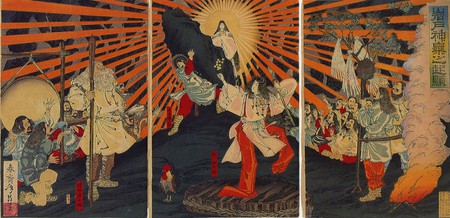
The murder of Uke-Mochi and the separation of day and night
Amaterasu ordered Tsukiyomi to go down to earth to visit Uke-Mochi, the food goddess. Uke-Mochi had a rather peculiar way of producing food: by vomiting and defecating it onto the Earth. Upon seeing this, Tsukiyomi became so disgusted and enraged that he murdered Uke-Mochi before returning to heaven. When Amaterasu learned of what he had done, she declared him an evil god and vowed never to see him again, thus separating night and day for all of eternity.
spacer
For more on the OLYMPICS and the Symbolism and the Spiritual Impact of these events see my article:
Temple of Baal – Part 5 – INVICTUS & OLYMPICS
spacer
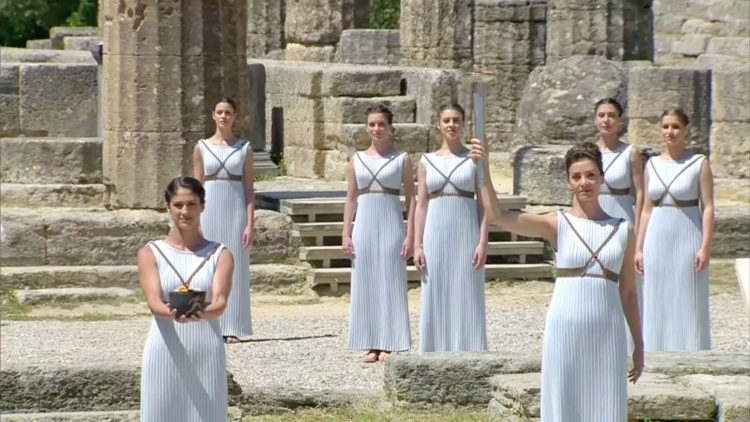
The Torch Relay will go on for eight days in Greece and cover 3,200 kilometers (1,988 miles). The flame will pass through 31 cities and 15 archaeological sites in its journey across the country.
Vassiliadis noted that this entire effort will not cost one single euro to the Greek taxpayer since it relies solely on sponsors and the combined volunteer efforts of more than 1500 individuals.

The Olympic Flame lighting ceremony was held Thursday in Olympia, Greece, without spectators due to coronavirus concerns.
The flame lighting ceremony, always held in the ancient Olympic site of Olympia, was attended by 100 accredited guests from the International Olympic Committee and the Tokyo 2020 Organizing Committee.
At the ancient Temple of Hera, up to 30 priestesses or ‘Caryatids Kores’ performed a series of rituals, calling on the sun god Apollo to ignite the Olympic flame using the rays of the sun and a parabolic mirror. The fire, which stays lit for the entirety of the Olympic Games period, symbolizes purity and represents the values of the Olympics between nations.
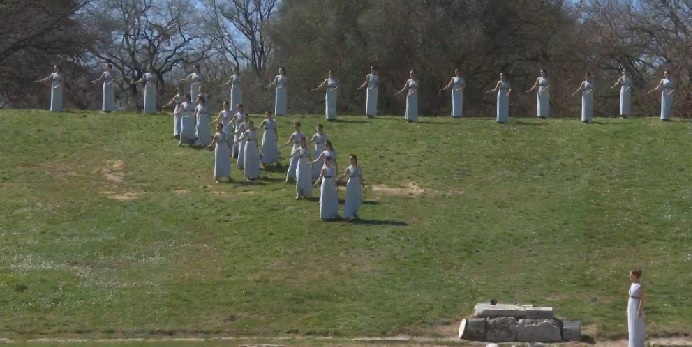
For the first time, a woman was the first Olympic torch relay torchbearer — Rio shooting gold medalist Anna Korakaki.
The Olympic Flame will spend eight days in Greece and will pass through more than 30 towns and cities around the country before descending onto Athens.
There it will be handed over to host city Tokyo, in a ceremony at the Panathenaic Stadium, home of the first modern Olympic Games in 1896.
spacer
The Panathenaic Stadium (Greek: Παναθηναϊκό Στάδιο, romanized: Panathinaïkó Stádio, [panaθinaiˈko sˈtaðio])[a] or Kallimarmaro (Καλλιμάρμαρο, [kaliˈmarmaro], lit. “beautiful marble”)[3][4] is a multi-purpose stadium in Athens, Greece. One of the main historic attractions of Athens,[5] it is the only stadium in the world built entirely of marble.[4]
A stadium was built on the site of a simple racecourse by the Athenian statesman Lykourgos (Lycurgus) c. 330 BC, primarily for the Panathenaic Games. It was rebuilt in marble by Herodes Atticus, an Athenian Roman senator, by 144 AD and had a capacity of 50,000 seats. After the rise of Christianity in the 4th century it was largely abandoned. The stadium was excavated in 1869 and hosted the Zappas Olympics in 1870 and 1875. After being refurbished, it hosted the opening and closing ceremonies of the first modern Olympics in 1896 (MIRROR Dates) and was the venue for 4 of the 9 contested sports. It was used for various purposes in the 20th century and was once again used as an Olympic venue in 2004. It is the finishing point for the annual Athens Classic Marathon.[3] It is also the last venue in Greece from where the Olympic flame handover ceremony to the host nation takes place.[6][7]
The stadium is built in what was originally a natural ravine between the two hills of Agra and Ardettos,[8] south of the Ilissos river.[9][10] It is now located in the central Athens district of Pangrati, to the east of the National Gardens and the Zappeion Exhibition Hall, to the west of the Pangrati residential district, and between the twin pine-covered hills of Ardettos and Agra. Until the 1950s, the Ilissos River (which is now covered by (and flowing underneath) Vasileos Konstantinou Avenue) ran in front of the stadium’s entrance, with the spring of Kallirrhoe, the sanctuary of Pankrates (a local hero), and the Cynosarges (a famous temple of Heracles, public gymnasium, and surrounding grove located just outside the walls of Ancient Athens[1] on the southern bank of the Ilissos river and near the Diomeian gate.[2] The modern suburb of Kynosargous is named after it.) public gymnasium nearby.
Originally, since the 6th century BC, a racecourse (racing horses is worship to Neptune/Poisdon) existed at the site of the stadium. It hosted the Panathenaic Games (also known as the Great Panathenaea), a religious and athletic festival celebrated every 4 years in honour of the goddess Athena. It is believed that criminals were executed in the stadium. The racecourse had no formal seating and the spectators sat on the natural slopes on the side of the ravine.[11]
spacer
Olympic Torch Relay for the Tokyo 2020 Games in 2021: Top things you need to know
Your in-depth guide for the torch relay of the Tokyo Olympics in 2021 – when, where, who, and how to watch live.
By Shintaro Kano – 22 March 2021 5:31
A year after the arrival of the Olympic Flame, the Olympic Torch Relay of the Tokyo 2020 Olympic Games in 2021 will get under way on Thursday (25 March).
The epic journey through Japan will start at the J-Village in Fukushima, and finish at the Olympic Opening Ceremony in Tokyo on 23 July when the cauldron will be lit. (723)
The Significance in the number 723 is the power that is in the consecutive digits 7, 2 and 3.
They all have high vibrations and positive features.
- Number 7 – Intelect, curiosity and the ability to reach spirituality in this life by exploring philosophical questions.
- More importantly, number two here is the gives the vibration of polarity and is why we see the number 723 is in desperate need to divide everything and see the world in black and white
- In Hinduism, the number 3 has several associations. For starters, it represents the Trimurti which is the Hindu trinity: Brahman, Vishnu, and Shiva. Three is also the numerical depiction of Om or Aum, which is the spiritual tone of the universe. Three (3) is the first sacred number, the first perfect number (Westcott, p. 41). Three represents the Pagan Trinity.” The number three or the Triad is the first odd number as the monad is not considered a number, but the father of all numbers. Within the energy of the number Three (3) is the structure of harmony and the triune nature that forms the three-sided triangle of fire, action and will. Additionally, each component offers a different perspective or dynamic to contribute to that outpour. Three faces, each in support of the other yet one in the same and emanating from the One.
25 Mar – 23 JulTokyo 2020 Olympic Torch Relay
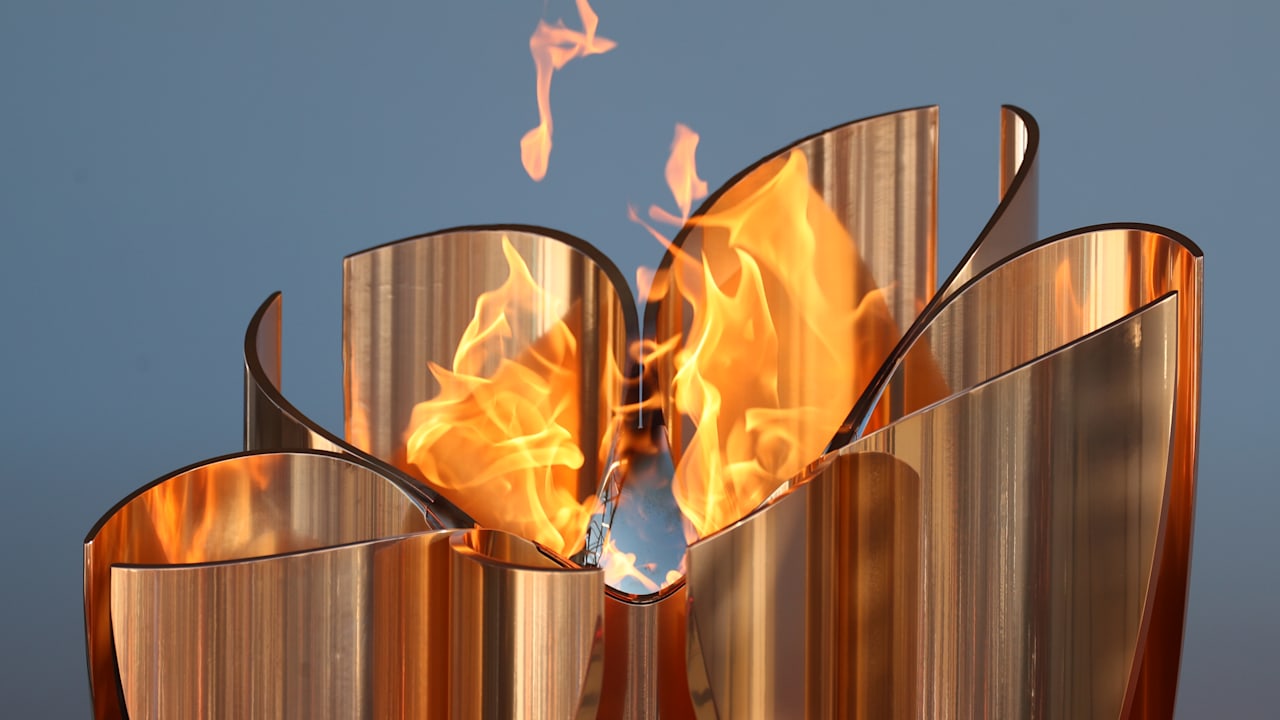
The schedule of the Tokyo 2020 Olympic Torch Relay in 2021
The torch relay is 121 days long.
The torch will spend three days in the prefectures hit hardest by the Great East Japan Earthquake in 2011 – Fukushima, Iwate, and Miyagi.
It will also spend three days in four other prefectures hosting multiple competitions during the 23 July-8 August Tokyo Games in 2021 – Chiba, Kanagawa, Saitama and Shizuoka.
Tokyo will host the torch the longest for 15 days. The remaining 39 prefectures will have it for two days each.
The schedule was unchanged from a year ago, when the Games were postponed to the summer of 2021.
The torch relay will pass through all 47 (4+7 =11)prefectures in the Land of the Rising Sun, starting from the J-Village national football training facility in Naraha, Fukushima, at 9:00 JST – fitting of the relay concept “Hope Lights Our Way“. It will kick off with the Japanese football team who won FIFA Women’s World Cup 2011 carrying the torch.
Following Thursday’s Grand Start ceremony, the flame will be carried to the second prefecture, Tochigi, on 28 March and reach Gunma two days later.
It lands in Okinawa – Japan’s southernmost prefecture – on 1 May and on 17 May will enter Hiroshima, the symbolic city of peace.
The relay touches the country’s northern tip Hokkaido on 13 June before coming back down the main island through Iwate and Miyagi and arriving in Tokyo on 9 July.
The finale on 23 July at the Olympic Stadium will be marked by the lighting of the Olympic Cauldron.
A full breakdown of the route and schedule can be found on Tokyo2020.Org here.
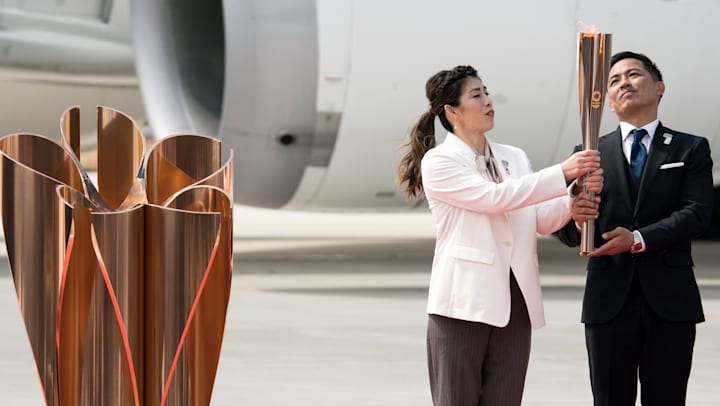
The Tokyo 2020 torch
The flame touched down in Japan on 20 March 2020 at Matsushima Airbase in Miyagi after being lit in Greece at Ancient Olympia and handed over at Panathenaic Stadium.
Since the postponement of the Games by a year to 2021, the flame had been safeguarded at the Olympic Museum in Tokyo, located across the street from the Olympic Stadium.
The design of the torch, coloured pink gold, was inspired by the cherry blossom, a flower synonymous with the Japanese spring.
The torch is also environmentally friendly. Approximately 30 per cent is made from recycled aluminum that was used for temporary housing after the 2011 quake and tsunami. (Another tie to 2011)
Hydrogen, which emits no carbon dioxide when burned, will be used to fuel the torch in certain legs of the relay.
The Tokyo Torch Relay runners
The honour of first torchbearer goes to the Nadeshiko Japan women’s football team, who won the 2011 FIFA Women’s World Cup to help uplift a nation still reeling from the aftermath of the disaster that year.
They will take the torch from the Grand Start to the second torchbearer, 16-year-old Fukushima native Owada Asato, as the relay kicks off.
spacer

https://arcadeheroes.com – Posted to the official Mario & Sonic 2020 website, I’ve modified this video with additional details as to what we know about the game so far. This will be an arcade exclusive rendition of the game. This is early PROTOTYPE footage and will likely change between now (July 2019) and release this Winter. [REUPLOAD for BitChute to customize some back end things]1 year, 9 months ago
spacer

https://arcadeheroes.com – Vying for the longest name in arcade gaming, Sega is back with something different than the norm – sports! Having released a Mario & Sonic Olympics game in 2016, the company is keen to jump onto the Summer 2020 Olympics bandwagon with this game, which is also available as an update to 2016 units. NOTE: This is prototype software and will change before the final release. 2 months, 3 weeks ago
 2451:21
2451:21Two of Japan’s largest convenience stores, 7-Eleven and Lawsons, will cease stocking porn magazines as they look to clean up their image ahead of the 2019 Rugby World Cup and next year’s Tokyo Olympics. Lauren Anthony reports. 2 years, 3 months ago
spacer
 1745:34
1745:34It is mainly fed to foreign tourists coming to Japan.”
features an old picture showing a no-go zone test planting of rice & vegetables to really find out how much radioactive materials they will absorb
2016 – Fukushima rice will be available for sale in the UK , Check out this picture showing the fact
2019 Dana Durnford SHOCK ! Your Not Going To Believe Where Japan Is Using Fukushima Radiated Rice
so i get this comment based on ONE IMAGE! & some idiot
These Fukushima crops will be provided to athletes and visitors during the Tokyo Olympic according to Japanese officials. Olympic athletes are NOT animals for any radioactive test and deserve much better than this!
“the Fukushima radioactive rice harvest site in Japan.
It is mainly fed to foreign tourists coming to Japan.”
features an old picture showing a no-go zone test planting of rice & vegetables to really find out how much radioactive materials they will absorb
2016 – Fukushima rice will be available for sale in the UK , Check out this picture showing the fact
2019 Dana Durnford SHOCK ! Your Not Going To Believe Where Japan Is Using Fukushima Radiated Rice
so i get this comment based on ONE IMAGE! & some idiot
These Fukushima crops will be provided to athletes and visitors during the Tokyo Olympic according to Japanese officials. Olympic athletes are NOT animals for any radioactive test and deserve much better than this!
http://amn.kr/imgdata/dj_hinews_asia/201907/201907205223943.jpg
http://japantimes.co.jp/news/2012/06/15/national/town-hosting-no-1-plant-starts-farm-tests-to-gauge-success-of-cleanup-work/
http://cdn.japantimes.2xx.jp/wp-content/uploads/2013/01/nn20120615f1a.jpg
http://translate.google.com/translate?hl=en&sl=ko&u=http://m.amn.kr/a.html%3Fuid%3D34745&prev=search
https://archive.fo/hwx45
 18012:19
18012:19Japan Inactivates All Radiation Monitors Ahead Of Tokyo Olympics.

Dana Durnford
23.8K subscribers
Singapore PM Lee Hsien Loong will lift remaining restrictions on food imports from Fukushima http://tiny.cc/f3eqfz
South Korean to bring their own Chefs & food to Japan for the 2020 Tokyo Olympics https://bit.ly/2oIzL7A
South Korean and Chinese Environment Ministers consensus radioactive water discharge from Fukushima is violation of international treaties and has an adverse impact on marine environments. https://bit.ly/33lyXEQ
If You Are A Biologist, You Should Stop Giving Money To AAAS Right Now By lunatic Hank Campbell https://bit.ly/2WGo26f
UK ( Nuke crank ) Gerry Thomas questions our fear of nuclear power https://ab.co/2JFq6pR
Letter: Get the facts straight on nuclear energy by Emma Stamas Colrain, Mass https://bit.ly/36uXiu3
Race for Canada’s first and the world’s second nuclear waste repository , 800 local jobs from nuclear waste repository https://bit.ly/2pxWYda , none of the communities have committed to the project.
Armless Kazakh painter draws works to protest nuclear testing By TATSUYA SATO https://bit.ly/2C6hjJq
High-risk demolition of Hanford former plutonium plant could resume https://bit.ly/2C4uOZV
Citizens’ group in Fukushima puts out radiation map in English By SHINICHI SEKINE http://tiny.cc/7v2lfz
Future of Arizona nuclear plant may see hydrogen production http://tiny.cc/9p2mfz
Prime Minister Abe’s Gift to Japan’s Political Prince: a Lump of Coal http://tiny.cc/032mfz
TTC resumes after Chemical Biological Radioactive Nuclear Explosive Paranoid Psychoses Idiots team was brought in to investigate garbage bag , police clear garbage bag at Keele subway station http://tiny.cc/c55mfz
Ontario hydro rate increase because of refurbishment of nuclear facilities
NRC and Feds Exempt Shuttered Pilgrim From Emergency Requirements , Sen. Edward Markey called it “shocking” https://wbur.fm/32mMomQ
Dana Durnford on twitter
https://twitter.com/DrDurnford
If you want to be interviewed or interview me send a email to me at
TNPInterview@hotmail.com
Your donation will help us sustain this most resource-intensive form of journalism, ensuring that the most complex and important stories still get told.
paypal https://www.paypal.me/danadurnford
or use credit card at my site http://www.thenuclearproctologist.org/ 1 year, 5 months ago


 801:25
801:25A construction worker died of a suspected heatstroke while renovating a convention centre that will be used by the Tokyo Olympics next year, as a deadly heatwave that has already claimed dozens of lives continues to blanket Japan. That’s causing concern among organisers, as the weather could pose a threat to athletes and fans next year. Jayson Albano reports. 1 year, 8 months ago


 571:17
571:17The Japanese city of Sapporo was formally approved on Friday as host of the marathon events at next year’s Summer Olympics. The decision was made based on concerns about temperatures in Tokyo, which regularly exceed 30 degrees Celsius (86 F) in the summer months. Ryan Brooks reports.


 1091:13
1091:13The Tokyo summer Olympics is set to be held in July and August next year, a time in Japan when the sweltering heat is causing organizers to think up countermeasures – including artificial snow – to fight the heat. Jayson Albano reports. 1 year, 7 months ago
spacer


 333:07
333:07not only has the nba changed dramatically since covid hit but this has changed so many
other things as well. the olympics which originally were set to kick off summer 2020 had to be pushed back year because of covid and now the usa may not win what could’ve been a guaranteed Gold. the olympic games could be changed forever when it comes to basketball.
#tokyo2021 #stephcurry #damianlillard #nba
#thefumble
For the latest in sports –
Shop Merch : https://teespring.com/stores/the-fumble-goat-series
Like us on Facebook: https://www.facebook.com/TheFumble/
Follow us on Twitter: https://twitter.com/FumbleSports
Find us on Instagram: https://www.instagram.com/thefumblesports/
The Fumble is sports news for the super fan. We cover everything from the NFL, NBA, MLB, MMA, NHL and every random sporting story in between. We tell you about the“` history-making plays, what your favorite athletes are up to after-hours, and take an irreverent, no BS take on sports. Watch The Fumble for the good, the bad, and the ugly sides of sports 4 months, 2 weeks ago


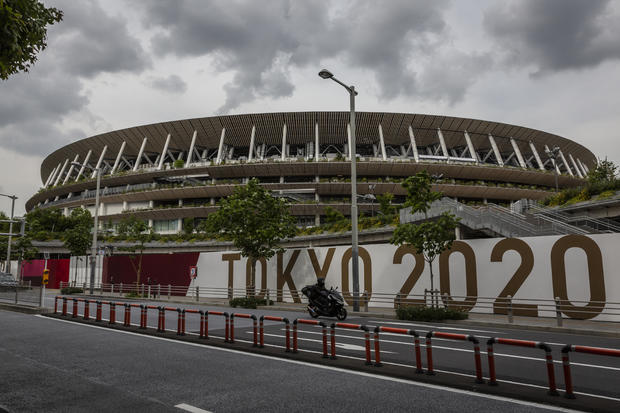
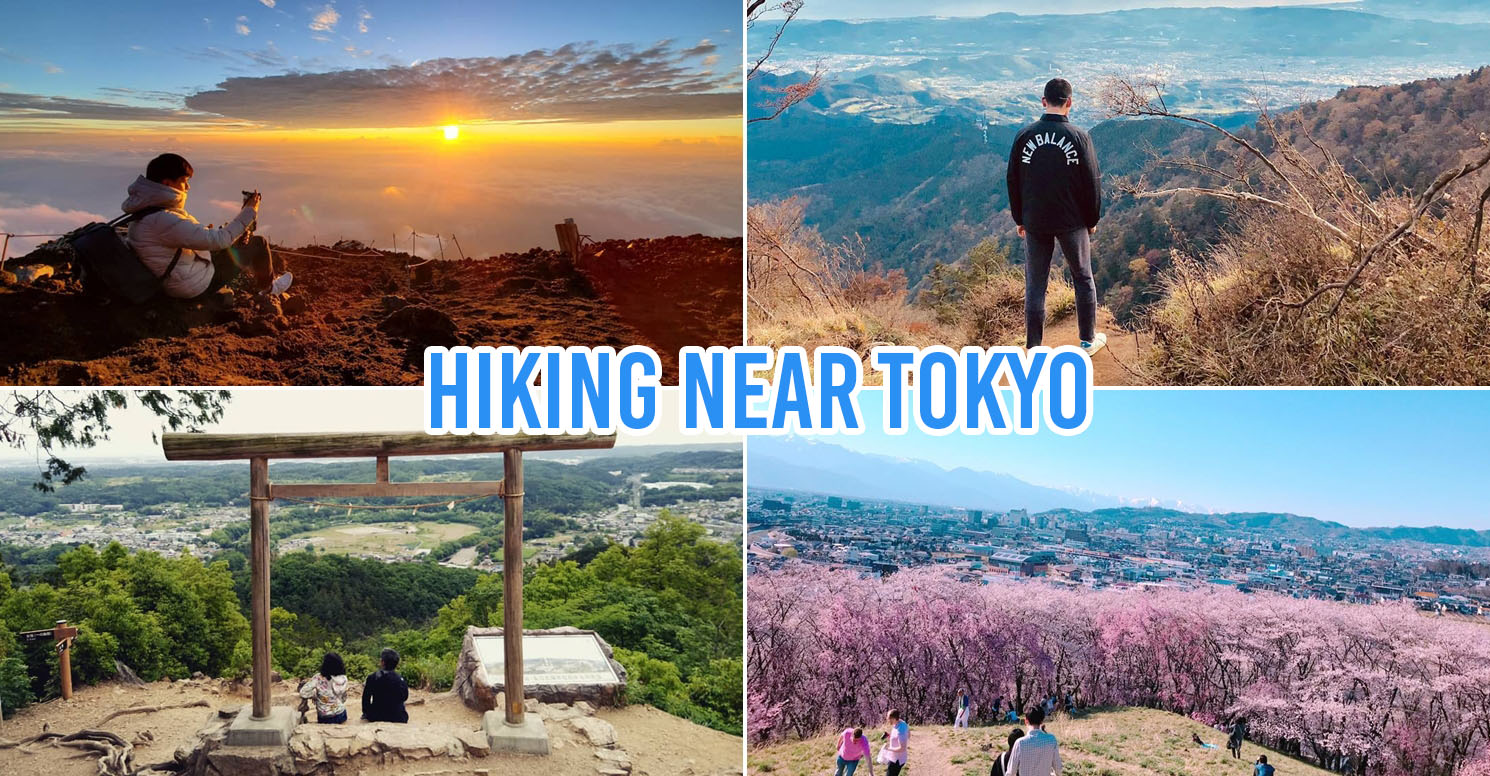 Images adapted from (clockwise, from top-left):
Images adapted from (clockwise, from top-left): 







 The Flower of Life’s harmonic circular structure seems to magically attract us. As if this ornament is constantly changing, if you look closely, many
The Flower of Life’s harmonic circular structure seems to magically attract us. As if this ornament is constantly changing, if you look closely, many

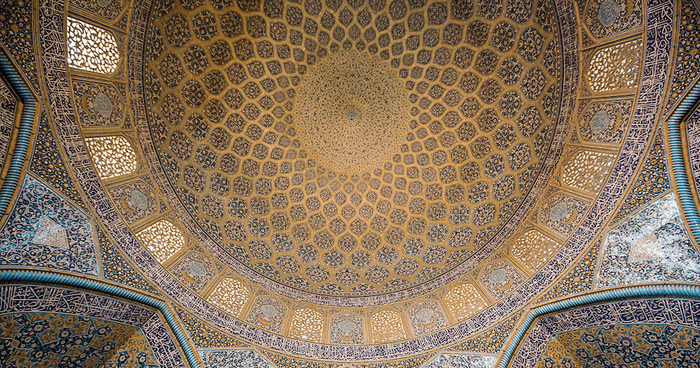
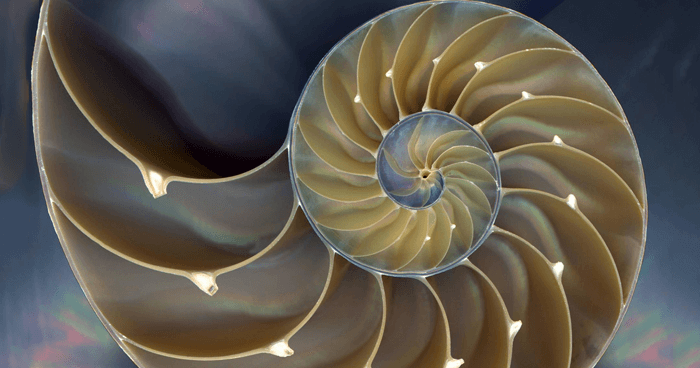

 Modern Human Evolution: Are Superhumans the Next Iteration?
Modern Human Evolution: Are Superhumans the Next Iteration?

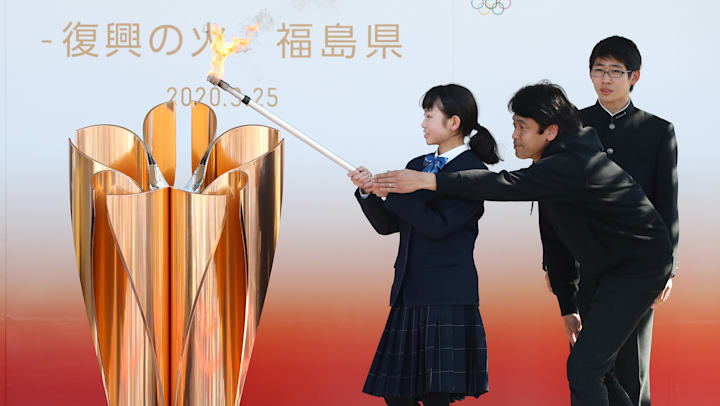





 THE SELF-GUIDED GODZILLA TOUR OF TOKYO
THE SELF-GUIDED GODZILLA TOUR OF TOKYO The Shinagawa Station Tile
The Shinagawa Station Tile First Godzilla Attack – the Yatsuyama Bridge
First Godzilla Attack – the Yatsuyama Bridge
 Hibiya Chanter Square
Hibiya Chanter Square Toho Studios
Toho Studios
 The Godzilla Store
The Godzilla Store Nishi-Rokugō Park
Nishi-Rokugō Park Kurihama Flower World’s Adventure Land
Kurihama Flower World’s Adventure Land

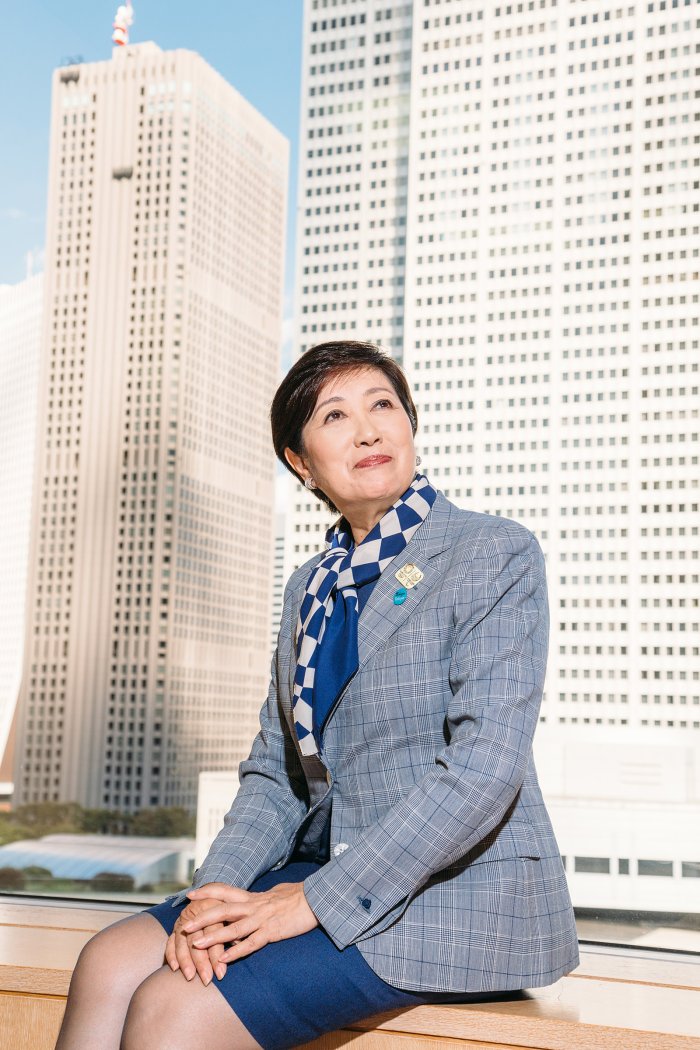







Comments are closed.